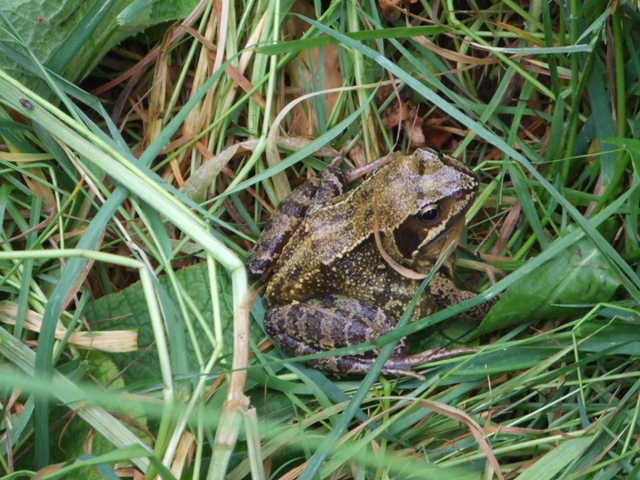William Herbert – A Common Frog
On 17 May while transcribing we met “William Herbert” a common frog who was guarding a grave.
Kate was transcribing a grave that had long grass and she screamed as she disturbed a frog and it leapt up and hit her in the chin.
The frog was guarding the grave of William Herbert Franklin so Diana named the frog “William Herbert” and took this excellent portrait of it.
The Common Frog is the most familiar of our amphibians. They spend very little time in water, except during the spring breeding season. Depending upon local temperatures, the spawn is usually laid in ponds during the months of February and March. Early clumps of spawn, laid during a mild spell, may be lost to frost and associated low temperatures.
Common Frogs spawn in a wide variety of ponds but appear to favour those with a certain degree of water flow. Individuals usually return to the pond in which they were born and will make this journey year after year. The males tend to arrive first and there is often strong competition amongst males to find a mate. A male will attach himself to a suitable mate (a condition known as amplexus) and the two individuals may remain attached for up to 24 hours during which time the eggs will be laid and fertilized. A male may mate with several females on successive nights. Mating and spawning is usual over by the beginning of May (though may be later in more northerly latitudes) and most adults move away from the breeding pond within a few days of mating.
The temperature at which the eggs and emergent tadpoles develop influences the speed of development but by the beginning of August, most of the resulting froglets will have left the breeding pond.
The Common Frog should be familiar to most individuals, with its brown or olive-green colouration and mixed pattern of darker markings. There is a light coloured stripe down each side of the body. Individuals showing unusual colouration are sometimes reported including some that are bright orange, red or yellow in tone. It is also worth noting that there are a number of other frog species present in Britain, several of which are similar in their general appearance. These include Pool Frog, Edible Frog and Marsh Frog
Related Website: BTO Web – Common Frog page
Website URL:http://www.bto.org/gbw/herps/species%20accounts/commonfrog.htm

